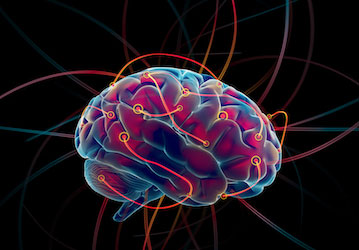Your brain is continuously evolving and growing, which is sometimes called having “plasticity” or being “malleable.” Neuroplasticity, also known as brain plasticity, is your brain’s ability to change itself in both structure and function in response to your environment, any experience, feeling, or injury. This ability to change and form new pathways in response to lost function or injury demonstrates just how resilient and adaptive the human brain can be. In addition, there are things you can do regularly to help improve your ability to think, learn, and perform well.
Who benefits from brain plasticity?
Everyone benefits from the brain’s ability to “rewire” or create new neuropathways. Brain plasticity is the foundation for learning throughout your life span, and it’s what helps repair damaged neural pathways after a brain injury. Starting in infancy, a child learns to walk and talk because of brain plasticity. New learning can continue well into old age and even after a brain injury such as a traumatic brain injury (TBI). For many years, healthcare providers and researchers used to think once the brain was injured, there was little hope for recovery. They also believed that adult brain cells and neuropathways were “fixed” or incapable of change. However, recent studies using brain imaging techniques have changed their understanding of the brain’s continued ability to grow and rewire. For example, cognitive functions can be damaged after a mild TBI, but brain exercises and “games” can help create new neuropathways and improve cognitive function.
Moderate and severe TBIs typically involve greater damage to brain cells and neuropathways, and patients might need more time to recover. Rehabilitation (a retraining of neuropathways) after TBI includes “teaching compensation” or learning alternate ways of doing things to optimize the reorganization of the injured brain. Both compensation and reorganization are processes dependent on brain plasticity, and neuroplasticity is possible even many years after an initial brain injury.
Neuroplasticity and mental resilience
Cognitive behavioral therapy (CBT) is a psychotherapy practice that induces changes in brain structure (as seen by neuroimaging) and function leading to positive outcomes for mental health struggles such as anxiety, depression, and post-traumatic stress disorder (PTSD). In CBT, mental health professionals guide you through gaining an awareness of inaccurate or negative thinking patterns, so you’re able to think more clearly and respond more effectively to situations.
Neuroplasticity and physical resilience
Constraint-induced movement therapy (CIMT or CIT) is a rehabilitation technique used in patients who have lost function in a limb due to brain injury. The “unaffected” limb (usually an arm) is restrained, forcing use of the “nonfunctional” limb. With repetitive practice, the brain rewires and learns to use the “affected” limb again.
Your brain’s resilience and its ability to reorganize and create new neuropathways is amazing.
Boost your brain health
Whether you’re overcoming a TBI or just want to optimize your brain’s capabilities, there are things you can do on a regular basis to promote brain plasticity.
- Be active. Aerobic exercise and regularly moving your body can help increase brain plasticity. Exercise increases brain-derived neurotrophic factor (BDNF), a growth protein in your brain that promotes survival and neurological activity of brain cells. However, after a TBI, your brain first needs time to rest. Exercising too soon after a TBI also might slow down the healing process and delay recovery. As always, before beginning an exercise program or return to duty/return to play, check with your healthcare provider.
- Eat healthy meals and snacks. What you eat is another important factor impacting brain plasticity. Diets consisting of high amounts of sugar and unhealthy fats (trans and saturated fats) can adversely affect brain plasticity. Omega-3 fatty acids, however, are often touted as “brain food” because they make up a large percent of brain tissue. Omega-3s can be found in oily fish such as salmon, trout, mackerel, and sardines and in plant sources such as walnuts, pumpkin seeds, and soy beans. In addition, antioxidants (specifically vitamins E and C), polyphenols (flavonoids, resveratrol, and curcumin), vitamin D, and some B vitamins are promising in their support of increasing brain plasticity, but more studies are needed. The connection between nutrition and brain plasticity is a growing field of research, so it’s important to ask your doctor before making any dietary changes.
- Learn something new. Enriched environments and new experiences encourage brain plasticity. When you learn something new—such as a new instrument, language, skill, or sport—new neuropathways are created in your brain. So, try challenging your brain! If you’ve been thinking about taking up the guitar, now’s the time.
- Get your ZZZs. Sleep is restorative and keeps neural circuits from overloading. It allows your brain time to reset, reorganize, and clear out toxins too. This keeps your brain functioning efficiently, so you can think and process information effectively when you’re awake. If you’re having trouble sleeping, these 10 healthy sleep habits can help.
- Practice effective coping skills. Chronic stress has a negative effect on positive neuroplasticity. Extreme stress might lead to engaging in negative coping strategies such as substance abuse or addictive behaviors, which can affect your brain’s healthy plasticity. Instead, boost your focus and resilience with meditation and deep breathing.
Bottom line
Your brain’s resilience and its ability to reorganize and create new neuropathways is amazing. It enables new learning, allows for adaptation to new situations, and even helps with recovery after a brain injury.
